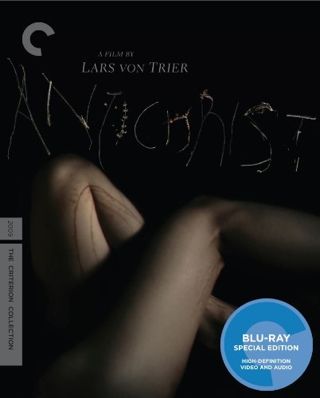Summary
Lars von Trier's notorious "Antichrist" is a fascinating and extremely gruesome experiment that combines B-horror tropes with art film concepts and cinematography to question differences between high horror and low horror, if there are such categories. Like the best of Argento, namely "Suspiria", "Antichrist" follows a strictly formulaic, minimalist, almost operatic script structure in which the story of a couple, played by Willem Dafoe and Charlotte Gainsbourg, grieve their dead son. The highly organized story, like a poem, has ample space for metaphors to form, dwell, and transform into overgrown mysteries, such as the decadent forest, Eden, where the couple retreat to their cabin to face demons. When the camera zooms in on a flower vase's murky water on the nightstand beside a bereft Gainsbourg, one senses the ensuing downward spiral.
While the film's plot, marked by chapters named after stages of grief, like "Pain" and "Despair," is rooted in absolute realism, the film's glorious moments are in its fantasy. There is a talking fox, subtle hints at ghostly occurrences, and many scenes that express the uncanny. Moreover, Gainsbourg's character, obsessed with witchcraft as it relates to historical gynocide and misogyny, adds much to the film's depressing sensibility that wallows unapologetically in decrepitude and faulty, negative reasoning. Dafoe, who plays the psychologist treating his hallucination-plagued wife, does a remarkable job depicting a person struggling through loss with logic. "Antichrist" works because Dafoe and Gainsbourg create archetypal characters, functioning symbolically as Logic and Psychosis in a Freudian maze with no exit. That said, the violent conclusions in the film's third chapter, "Despair (Gynocide)," are grim, graphic, and very difficult to watch. "Antichrist", like its sister film in violence portrayed artfully, "Irreversible", has all the more shock value because of the archetypal symbolism it successfully establishes. --"Trinie Dalton"


